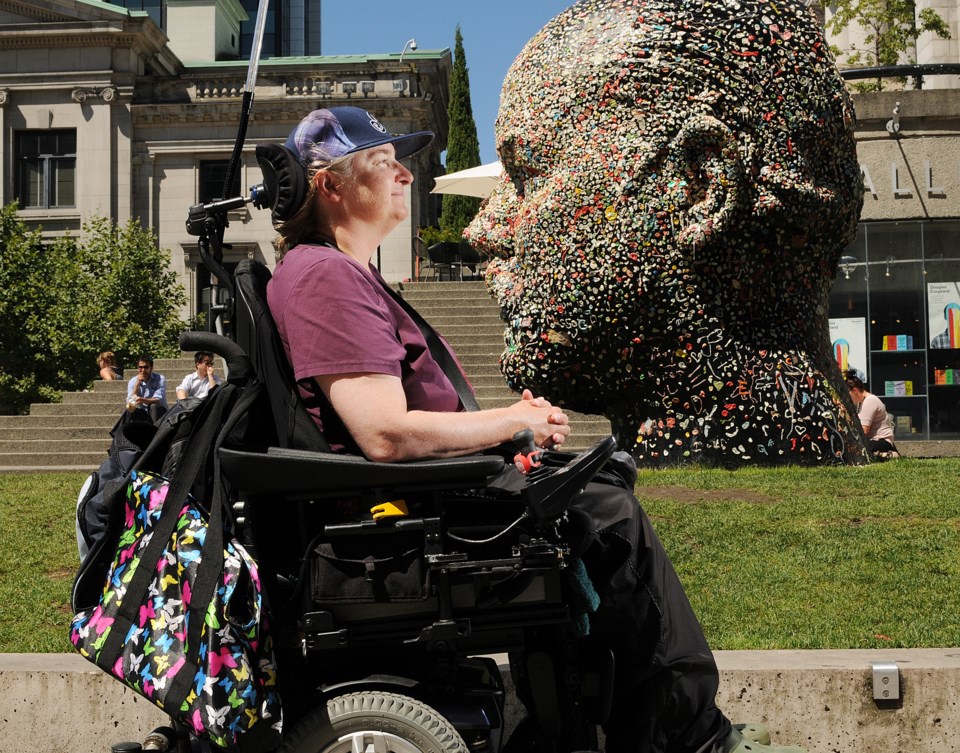While most visitors wouldn’t think twice about sticking a piece of gum on the popular Gumhead installation, an innocent-looking platform is deterring those in wheelchairs from participating in public art.
Sitting on top of a grassy mound outside the Vancouver Art Gallery is a seven-foot-tall sculpture of artist Douglas Coupland’s head. Many have already stuck gum on the gallery-commissioned sculpture since its inception on May 31 as part of a crowd-sourced and interactive project.
However, when musician sylvi macCormac visited the installation last month she couldn’t contribute her piece because of the mound being a step above ground and impossible for her wheelchair to access.
Approximately over 15 per cent of the city’s residents have some form of physical disability or mobility restriction, according to the City of Vancouver.
Although the city values being an inclusive Vancouver with programs targeting accessibility in buildings, public transit, parking and other public amenities, the location of the Gumhead was determined by the City of Vancouver.
Art gallery staff did not agree to an interview but replied in a statement to the Courier that “the normal permit process” was followed to install the work.
“This was deemed the best space for the work after researching various options around the site,” wrote director of operations Tom Meighan. “We had to stay within strict guidelines for the installation to ensure the safety of the work and the public. Also, this space is part of the overall heritage footprint on the site of the Gallery. Changing it in any way would be difficult.”
Feeling frustrated after her Gumhead visit, macCormac fumed about the incident on Facebook asking, “If art is not access-able does it exist? ... why do they build ramps when they are building the buildings and then take the ramps out?”
She acknowledges that the problem she faced was an isolated incident and doesn’t reflect the accommodations made for gallery staff and visitors. She called it a slip in the planning stages.
“Its intention was to include everyone, but because there’s a step, people with disabilities in wheelchairs or walkers or canes can’t quite get up that step. To me it was an example of so many things that by not thinking about it, it becomes inaccessible,” said macCormac.
Having recently visited the Vancouver Art Gallery, Vancouverite Matthew Lo recalled visiting the upper floors where smaller rooms with special exhibits were located. Lo doesn’t use a wheelchair but he imagines the small corridors and special rooms with intricate structures inside to be “…strenuous for someone on a wheelchair to be navigating.”
“Everywhere should be wheelchair accessible. The art gallery is a fixture in the city so it is important for them to be accessible by all kinds of people,” added Lo.
Jill Weiss, chair of the disabilities advisory committee to the city, says the committee focuses on housing so wasn’t involved in the art installation. But Weiss was shocked the permit came from the city. She suggested macCormac file a human rights complaint because it violates Sec. 8 of the B.C. Human Rights Code.



